How to Ferment Chicken Feed: Discovering the Path to Robust Poultry
- March 6, 2024
- 0 comment
Transitioning our backyard into a flourishing homestead has involved exploring various sustainable practices. Among these, fermenting chicken feed stands out for its significant positive impact on our poultry’s health.
My experience with this method has been a journey of experimentation and learning, leading to a richer diet for our chickens and a step towards a more sustainable way of living.
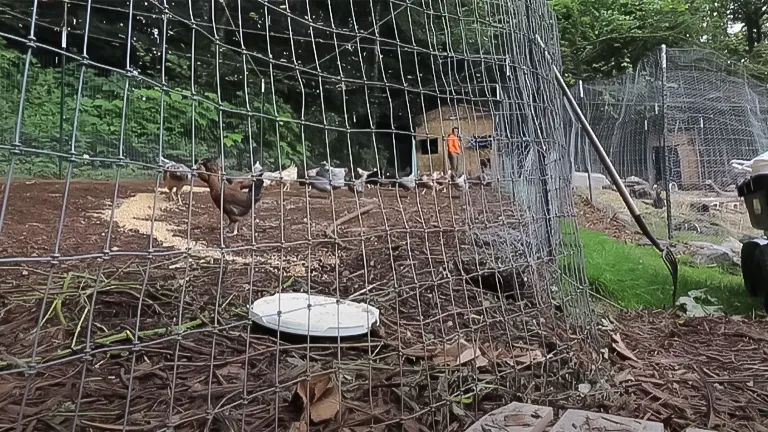
In what follows, I aim to share my journey, the knowledge I’ve gained, and a step-by-step guide on how to ferment chicken feed effectively. This information is intended to support and inspire fellow poultry keepers in enhancing the welfare of their birds through improved feeding practices.
List of How to Ferment Chicken Feed:
- Choosing the Right Feed
- The Fermentation Vessel
- Water to Feed Ratio
- Fermentation Duration
- Feeding Time
- Continuous Fermentation
- Observation and Adjustment
- Cleanliness is Key
Why Ferment Chicken Feed?
Fermentation, a natural process driven by beneficial bacteria, transforms ordinary chicken feed into a nutrient-rich, probiotic powerhouse. This process enhances the feed’s nutritional value, making vitamins and minerals more accessible to chickens while promoting a healthier gut environment. The advantages include improved digestion, increased resistance to diseases, and enhanced overall health, leading to happier, more productive chickens.
8 Step-by-Step Guide to Fermenting Chicken Feed
Embarking on the fermentation journey might seem daunting at first, but with these guidelines, it’s a straightforward process that yields significant rewards.
Step 1: Choosing the Right Feed
Starting with a high-quality, whole grain feed is crucial for successful fermentation.
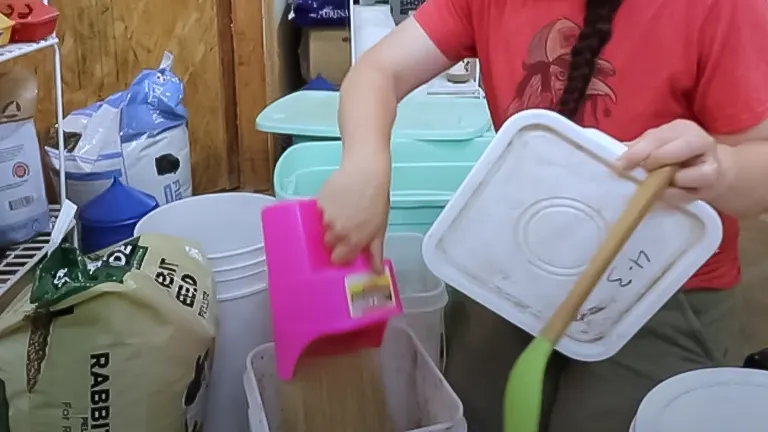
Whole grains are preferred because they provide essential nutrients and maintain structural integrity during the fermentation process, ensuring the feed remains effective for chicken consumption.
Step 2: The Fermentation Vessel
A clean, food-grade container is necessary for fermenting chicken feed. The size of the container should be chosen based on the size of your flock to accommodate the necessary amount of feed.
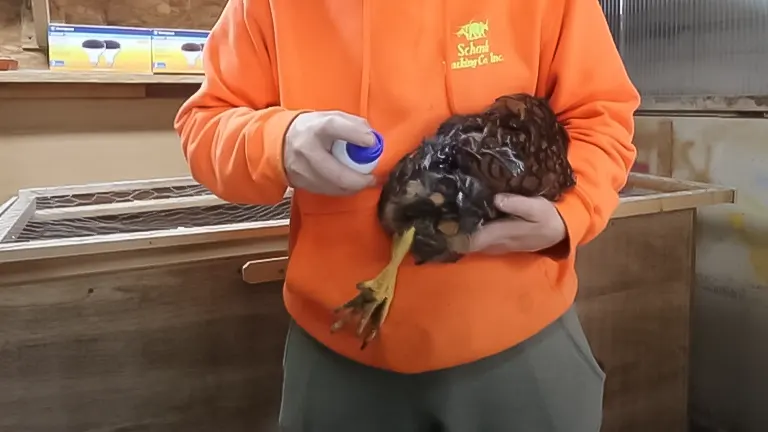
The container must be able to be covered to prevent contamination but should also allow for the escape of gases produced during fermentation.
Step 3: Water to Feed Ratio
Achieving the right water to feed ratio is essential for proper fermentation. The recommended ratio is generally 2 parts water to 1 part feed, which ensures the feed is fully submerged.
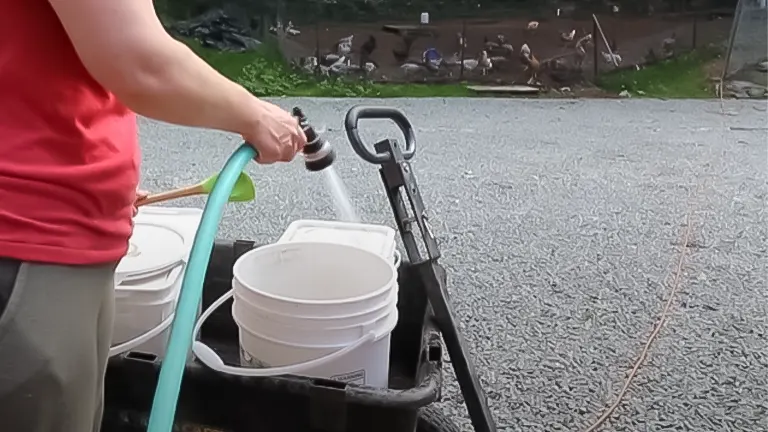
This ratio may need adjustments based on the specific type of feed used and to ensure complete coverage.
Step 4: Fermentation Duration
Fermenting the feed typically takes 3 to 4 days at room temperature, although this can vary with different ambient conditions.

The feed is considered ready for use when it emits a slightly sour smell that is not unpleasant, indicating successful fermentation.
Step 5: Feeding Time
After fermentation, serve the feed in a clean trough or spread it directly on clean ground.
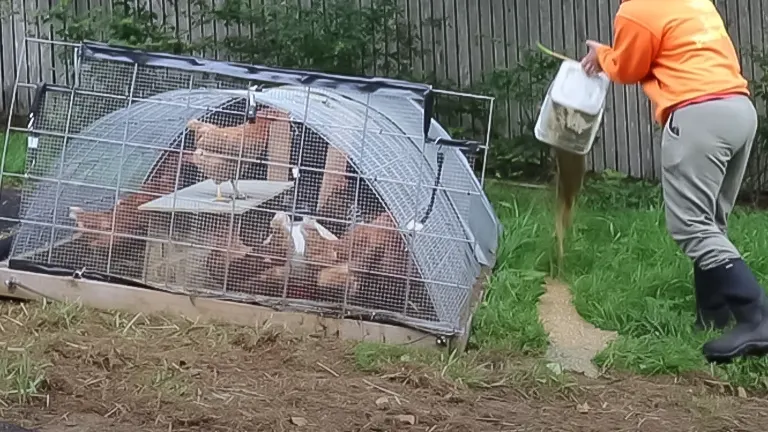
It’s important to observe the amount consumed by the chickens to make necessary adjustments for future batches, ensuring that the feed is neither over nor under-supplied.
Step 6: Continuous Fermentation
To maintain a steady supply of fermented feed, continue the fermentation process by adding fresh feed and water to the container after each feeding, following the established water to feed ratio. This practice ensures a consistent and ongoing supply of fermented feed for the flock.
Step 7: Observation and Adjustment
Regular monitoring of the flock’s response to the fermented feed is vital. Indicators of success include healthy, vigorous birds with good appetites and shiny feathers.
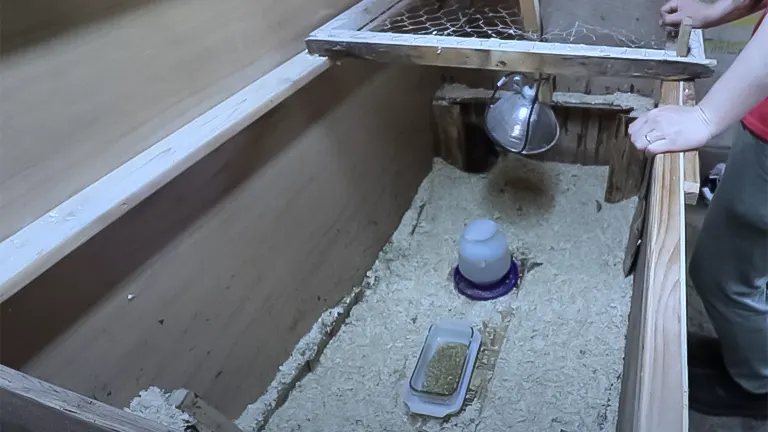
Adjustments to the fermentation process may be necessary based on these observations to optimize feed effectiveness.
Step 8: Cleanliness is Key
Throughout the fermentation process, maintaining cleanliness is crucial to prevent the feed from becoming contaminated with harmful bacteria or mold.

This involves keeping the fermentation vessel clean, ensuring the feed and water added are free from contaminants, and regularly checking the feed for any signs of spoilage.
Comparing Fermented Feed to Conventional Feeding Methods
Fermented chicken feed stands out for its ability to improve flock health and reduce feed costs. Unlike dry feed, fermented feed boasts increased bioavailability of nutrients and introduces beneficial probiotics to the chickens’ gut flora, leading to better digestion and nutrient absorption. Furthermore, the slight acidity of fermented feed helps deter harmful pathogens, offering a natural way to boost the immune system.
Comparison Table Between Fermented Feed and Conventional Feed
| Features | Fermented Feed | Conventional Feed |
|---|---|---|
| Nutritional Value | Higher, due to increased bioavailability of nutrients and addition of probiotics. | Lower, as nutrients are in their original state and may be less bioavailable. |
| Digestibility | Improved, as fermentation breaks down anti-nutrients and complex proteins. | Standard, as feed is not pre-digested or broken down. |
| Immune System Support | Enhanced, due to the introduction of beneficial bacteria to the gut flora. | Limited, as feed does not naturally include probiotics. |
| Feed Efficiency | Higher, chickens require less feed due to improved nutrient absorption. | Lower, as chickens may require more feed to obtain the same nutritional benefits. |
| Cost Over Time | Potentially lower, due to reduced feed quantity needs and improved health reducing veterinary costs. | Higher, considering the potential for increased feed consumption and health-related expenses. |
| Preparation Time | Requires initial setup and daily maintenance for fermentation. | Minimal, as feed is used directly from the bag without additional preparation. |
| Waste Reduction | Lower waste, as chickens tend to spill less fermented feed and absorb more nutrients. | Higher waste, due to spillage and less efficient digestion. |
| Health Issues | Reduced risk of diseases thanks to a healthier gut environment and the antibacterial properties of fermented feed. | Standard risk, without the added health benefits of fermentation. |
Pros and Cons Based on Firsthand Experience
From personal trials and careful observation, the benefits of fermented chicken feed have significantly outweighed any drawbacks. However, it’s important to present a balanced view based on real-life application.
Pros
- Enhanced Nutrient Absorption: Fermentation breaks down phytates and other antinutrients, making vitamins and minerals more accessible.
- Improved Gut Health: The probiotics generated during fermentation promote a healthy digestive system.
- Reduced Feed Waste: Chickens tend to spill less fermented feed, and its increased nutrient density means they need to consume less.
- Cost Efficiency: Although the initial setup requires time and effort, the long-term savings on feed costs are notable.
Cons
- Daily Maintenance: The fermentation process requires daily attention to ensure the feed remains submerged and free from contamination.
- Initial Learning Curve: Perfecting the fermentation process to suit specific flock needs can take time and adjustment.
Making An Informed Decision
Based on extensive experience and research, fermented chicken feed offers a compelling array of benefits for poultry health, welfare, and farm efficiency. While it demands a certain level of commitment and oversight, the outcomes—in terms of bird health, productivity, and feed cost savings—strongly justify the investment.
Expert Recommendations for Best Results
To achieve the best outcomes from fermenting chicken feed, it’s essential to start with quality ingredients, maintain a clean fermentation setup, and monitor the flock’s response closely. Adjustments to the fermentation time, feed composition, and serving methods should be made based on observations of the flock’s health and behavior.
Related Articles:
- Best Bedding For Chickens
- Best Safe Chicken Coop Heater
- 8×8 Chicken Coop Plans
- Turning a Shed Into a Chicken Coop
- How to Make a Chicken Coop Out of Pallets
- Best Sand for Chicken Coop
- How To Insulate a Chicken Coop
- How To Heat a Chicken Coop
- How To Keep Water from Freezing in Chicken Coop
- How to Build a Chicken Coop
- How To Build Chicken Nesting Boxes
- How to Raise Happy and Healthy Chickens in Your Backyard
- When Can Chicks Go Outside? Timing and Tips for a Smooth Transition
- 12 Reasons why Ducks are Better than Chickens
- Best Automatic Chicken Coop Doors 2024: Expert Reviews & Buyer’s Guide
- Best Fans for Chicken Coop 2024: Effective Cooling Solutions Reviewed
Final Conclusion
Fermenting chicken feed represents a powerful strategy to enhance poultry health, reduce feed costs, and promote sustainable farming practices. By following the guidelines shared in this article, based on real-world experience and expert insights, poultry keepers can unlock the full potential of fermented feed, contributing to the well-being of their chickens and the productivity of their farms.
Frequently Asked Questions
- What is fermented chicken feed?
Fermented chicken feed is regular poultry feed that has undergone a lacto-fermentation process, where beneficial bacteria break down the feed’s sugars and starches, making the nutrients more accessible and digestible for the chickens. - Why should I ferment chicken feed?
Fermenting chicken feed enhances its nutritional value, improves digestion, boosts the immune system of your poultry, reduces feed costs by increasing feed efficiency, and can contribute to overall healthier and more productive chickens. - How do I start fermenting chicken feed?
Begin with a high-quality, whole grain feed, mix it with water at a ratio of approximately 2 parts water to 1 part feed in a clean, food-grade container, and let it sit at room temperature for 3-4 days, or until it develops a sour, yeasty smell indicating fermentation. - What type of container should I use for fermentation?
Use any clean, food-grade container that can be covered to prevent contamination. Ensure it allows gases produced during fermentation to escape to prevent the buildup of pressure. - Can I ferment any type of chicken feed?
While most whole grain feeds can be fermented, results may vary with pelleted or crumbled feeds, as they might disintegrate into mush. However, many keepers successfully ferment all types of feed. - How long does it take to ferment chicken feed?
Typically, 3-4 days are sufficient for the fermentation process, but this can vary depending on the ambient temperature and humidity levels. Observe the feed’s smell and texture for signs of successful fermentation. - How do I know if the feed has fermented properly?
Properly fermented feed will have a tangy, sour smell similar to sourdough or yogurt. It should not smell rotten or offensive. The feed will also appear slightly swollen and moist. - How should fermented feed be stored?
Fermented feed should be used within a few days of fermentation and kept in a cool, dark place if not used immediately. Do not allow fermented feed to sit for too long to avoid spoilage. - How much fermented feed should I give my chickens?
Start with the same amount of feed you would normally provide, adjusting based on observation. Chickens tend to eat less fermented feed due to its increased nutrient density but observe your flock’s appetite and adjust accordingly. - Can fermented feed go bad, and how can I tell?
Yes, fermented feed can spoil if it’s over-fermented, contaminated, or stored improperly. Signs of spoiled feed include a foul, putrid smell, visible mold, or sliminess. If in doubt, discard the feed and start a new batch to prevent health risks to your chickens.
Your feedback is invaluable to us! We invite you to share your personal experiences and insights about fermenting chicken feed in the comments section below. Whether you’re a seasoned expert or a newcomer to the practice, your stories and advice on “How to Ferment Chicken Feed: Discovering the Path to Robust Poultry” could greatly assist fellow poultry enthusiasts in navigating this beneficial feeding method. Let’s help each other create healthier, happier flocks through shared knowledge and experiences!

Edward Smith
Forestry AuthorWoodworking is about more than crafting; it's a harmonious connection with nature, mastering tools, and preserving our environment. I'm here to share my knowledge and experiences with you, forging a future where we can embrace wood's beauty and utility while safeguarding our forests' health and diversity.











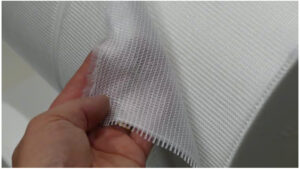

Leave your comment